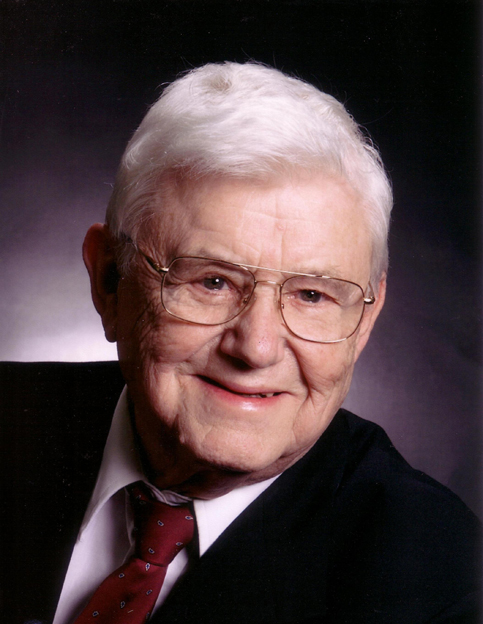In Memoriam: John M. "Jack" Selby, CHP
1932-2013
Ronald L. Kathren, CHP

♦♦♦
To view the HPS History Committee interview with Jack Selby, click here.
♦♦♦
John M. "Jack" Selby, one of the most colorful, productive, and respected elder statesmen in the Health Physics Society (HPS) and the American Academy of Health Physics (AAHP), passed away on 18 July 2013 at the age of 81.
Jack, as friends and colleagues knew him, was intensely passionate about health physics and was especially proud to be known as a practical operational health physicist. His contributions were many and varied, and he leaves behind a legacy of beneficial accomplishments across the entire spectrum of health physics, but especially so in the realm of standards, which were his passion within the profession.
Jack earned his BS in chemistry from Kansas State University, graduating in 1954. He accepted a position at Hanford with General Electric, and it was there he was introduced to health physics and began his six-decade-long career in the field. When the Army called him to active duty the following year, he was assigned to the Army Medical Center in Maryland as assistant chief of health physics.
Jack returned to his Hanford health physics position a year later and, with the exception of a three-year hiatus at Lockheed Georgia Nuclear Division in Marietta, Georgia, from 1958 to 1961, spent the rest of his career at Hanford, employed by General Electric, until it was superseded in 1965 by Battelle Memorial Institute and the Pacific Northwest National Laboratory (PNNL), where he rose through various scientific and management positions to be one of a handful of senior staff scientists. After his retirement from PNNL in 1992, he continued as a consultant for M.H. Chew and Associates and as part-time health physicist to Bruker Elemental, a local firm manufacturing handheld x-ray fluorescence equipment.
Standards were his passion, and he devoted countless hours as a member or chair of various voluntary standards working groups and committees at all levels, working through the American National Standards Institute (ANSI), the American Society for Testing and Materials, and the International Electrotechnical Commission (IEC). Jack was a prime mover in the expansion, reorganization, and maturation of the HPS Standards Committee and in the involvement of the HPS as the secretariat to ANSI N13.
A second passion in his health physics career was mentoring and guiding junior members of the profession, both formally and informally. As a manager, he always encouraged the development of his staff members, mentoring them and guiding them to the next step in their careers. Most of all, he loved teaching and codirecting topical short courses through the Harvard School of Public Health continuing education program, offering to the students the benefits of his vast store of experiences.
His professional accomplishments brought him a number of prestigious honors and awards. A charter member of the HPS, he served as president of the Columbia Chapter and as secretary of the national Society (1976–1978) and was the 1990 recipient of the Founders Award and elected a Life Fellow. Most recently, he was honored with the prestigious 1906 Award of the IEC.
Jack was a certified health physicist and one of the principal architects of the formation of the AAHP, playing a prominent role in the organizing meeting of that body at the 1982 HPS Annual Meeting in Las Vegas and subsequently leading the effort to develop the necessary initial policies, rules, and procedures for the newly formed organization. He served for many years as a director of the Herbert M. Parker Foundation.
Outside of his profession, Jack was a man of many interests and talents—a modern Renaissance man, as it were. He contributed to his community through volunteer acts of service, including ministry through his church and by sharing his voice and piano music talents as a participant in the local light opera and choral groups. He was an accomplished woodworker, a collector of old tools, and for many years a dedicated Boy Scout leader, whose dedication and contributions to that organization were recognized when he received the Silver Beaver Award.
A devoted husband and father, he and his wife Gwen celebrated 54 years of marriage before her death. Jack was doubly blessed in marriage when he married Carol Jensen in 2009. Jack will be missed by his wife Carol and by sons Greg and Kevin and daughter Lori and their spouses, 10 grandchildren, and 4 great-grandchildren.
Finally, and on a personal note, it was my good fortune to enjoy a close personal and professional relationship with Jack for more than 50 years. It was he who involved me in standards work, and it was rewarding to work with him not only on standards, but also teaching at Harvard and on many of the projects that he undertook while serving as the principal for the Department of Energy (DOE) lead lab in health physics, major projects such as the DOE Laboratory Accreditation Program, the first DOE ALARA (as low as reasonably achievable) guide, and the massive DOE Technological Considerations in Emergency Preparedness project. And so, so long old friend; you leave behind a large legacy of professional contributions that have influenced the practice of health physics and many good friends and colleagues. You will be missed by all who knew you.




